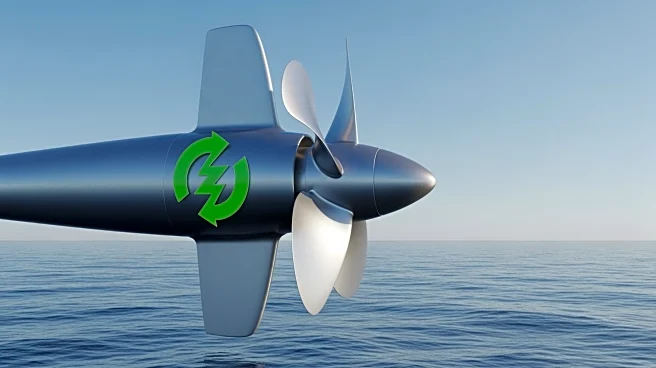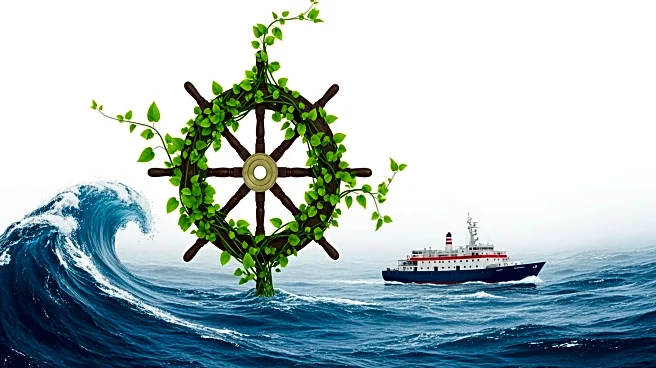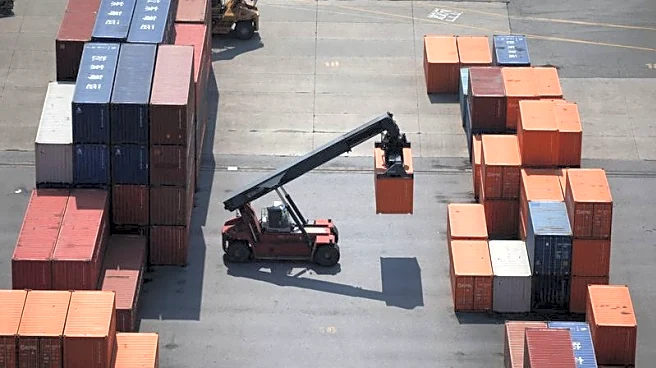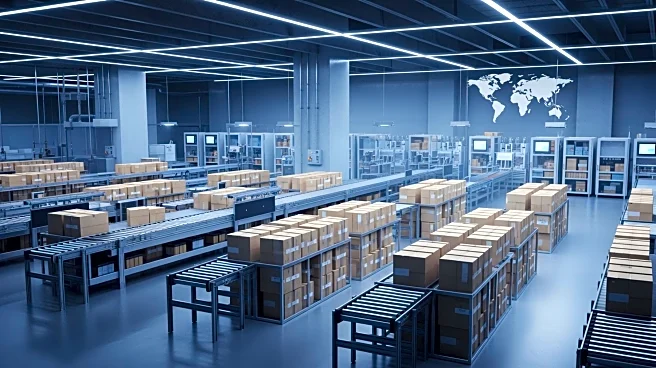What's Happening?
In October 2025, the marine industry witnessed a significant increase in orders for alternative-fueled vessels, with 30 new orders placed, according to DNV’s Alternative Fuels Insight platform. The majority
of these orders, 26 in total, were for LNG-fueled vessels, predominantly from the container segment. Additionally, four methanol-fueled vessels were ordered, three of which are intended for the tankers segment. This trend is part of a broader movement towards sustainable maritime operations, with a total of 222 alternative-fueled vessel orders placed in the first ten months of 2025. LNG-fueled vessels continue to lead the market, representing 67% of all alternative-fuel orders this year. Methanol-fueled vessels follow with 47 orders, while LPG, ammonia, and hydrogen-fueled vessels make up the remainder. The container segment alone accounts for 65% of all new orders for alternative-fueled vessels in 2025.
Why It's Important?
The increase in orders for alternative-fueled vessels highlights a significant shift in the maritime industry towards more sustainable practices. This trend is crucial as the industry seeks to reduce its carbon footprint and comply with stricter environmental regulations. The dominance of LNG-fueled vessels indicates a preference for this technology due to its relatively mature infrastructure and lower emissions compared to traditional fuels. The investment in alternative fuels is expected to drive innovation and infrastructure development, such as bunkering facilities, which are essential for supporting the growth of this fleet. This shift not only impacts shipbuilders and operators but also has broader implications for global trade and environmental policy, as the maritime industry plays a critical role in international logistics.
What's Next?
As the demand for alternative-fueled vessels grows, further investments in bunkering infrastructure and technology development are anticipated. The maritime industry may see increased collaboration between shipbuilders, fuel suppliers, and regulatory bodies to ensure the successful integration of these vessels into global fleets. Additionally, the continued focus on sustainability could lead to more stringent regulations and incentives for adopting cleaner technologies. Stakeholders will likely monitor the performance and adoption rates of these vessels to assess their impact on operational efficiency and environmental goals.












